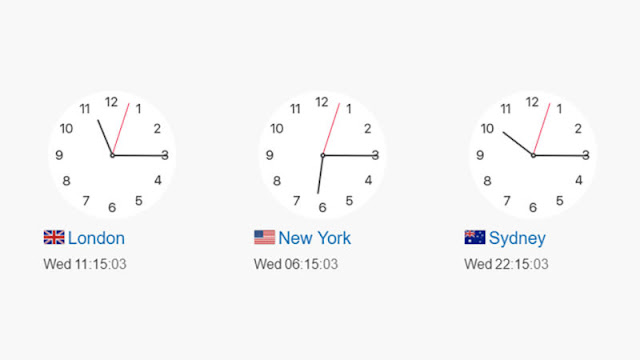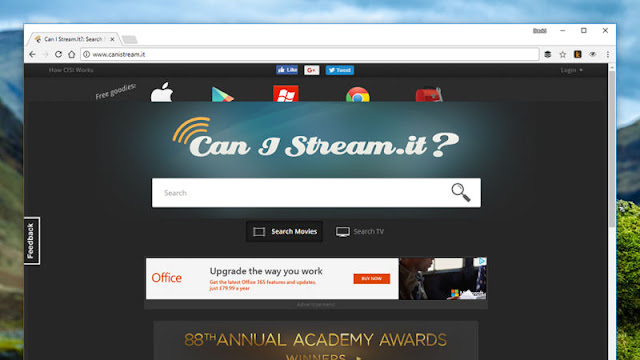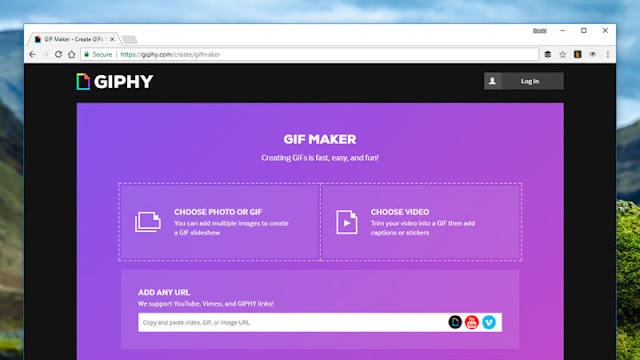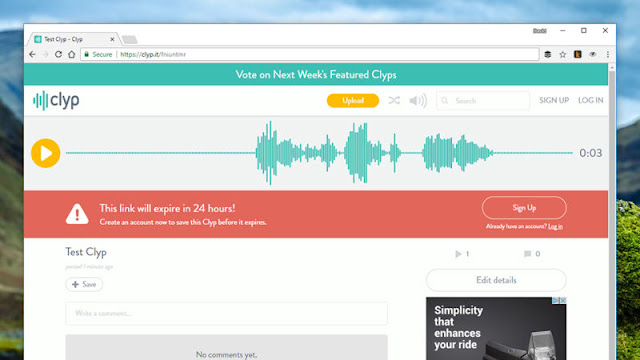What is a Free VPN?
A Free VPN (Virtual Private Network) is a cost-effective online
service that provides digital privacy, security, and the ability to
unblock and download website content from all over the world at no cost
at all.
Running a complementary VPN service isn’t easy. That’s why the best
providers charge subscribers for their services. However, we feel
strongly that everybody should be able to access a VPN for free when
they need one. That is why we have hunted far and wide for the five best
free VPNs of 2017. In addition, to make your life easier, this article
will explain everything you need to know about free services.
VPN services have quickly risen to fame in the last few years. VPN
software gives people the ability to protect themselves and their data
from online surveillance by Internet Service Providers (ISPs),
governments, advertisers, and even hackers.
VPNs also allow people to unblock website content by allowing them to
pretend to be in a different country. This makes them perfect for
people who are going on holiday and want to access services from back
home. They are also ideal for people who want to access foreign TV
streams (or sports competitions). Furthermore, VPNs are excellent for
people living under strong government censorship.
In 2017, what’s the best COSTLESS VPN service the online world has to offer?
The providers in this article are the best complementary VPN services
of 2017. However, for a full blisteringly fast and fully featured
service (perfect for those that want to download a lot of data), please
look at
these premium VPNs.
Remember, unlike most free options, the VPNs in this guide are
reliable, secure, and highly efficient. They have all been thoroughly
tested by our experts.

PROS:
- Simple setup, incredibly easy to use
- Excellent encryption
- Can connect up to 5 devices
- 500MB of free data every month
CONS:
- No peer-to-peer (P2P)
- Few advanced settings
- Usage capped
Our
review found TunnelBear to be a
fantastic free VPN that many people like because of its amusing style. However, this VPN is more than just fun.
This VPN doesn’t keep any logs, which makes it
great for security. In addition, the company’s privacy policy is outstanding, making this a
reliable free VPN
to use for online privacy and security. Another positive aspect of this
free VPN is that it gives users access to all of the VPN servers on the
network. In addition, those servers are excellently placed.
Unfortunately, you can’t use the free option for any more than 500MB
worth of web browsing per month. When the data limit kicks in, however,
you can
earn more data by doing some social sharing!

PROS:
- Strong encryption
- Servers in 22 countries
- Zero logs
- Superb privacy policy
- Highly experienced customer care
hide.me is a VPN provider from Malaysia that offers a free VPN plan. Subscribers can
select from 28 servers in 22 countries. Connection speeds are solid and security is taken care of thanks to OpenVPN encryption. Get a
whopping 2GB per month
– quite a lot of data, and certainly enough to get you some privacy
when you really need it (and to unblock websites that are unavailable).
It is also compatible with all devices.
As with all the free VPNs on our list, this VPN has limitations. If you
use the internet a lot, then you should probably choose a non-data
capped VPN. With that said, we really like hide.me – it is one of the
best all-around free VPNs available in 2017.

PROS:
- Easy setup
- P2P allowed
- Owned by Opera
- Easy to use apps
- Servers across the globe
CONS:
- Minor logging
- 2GB limit on Starter Plan
SurfEasy is a Canadian free VPN provider that is very similar to TunnelBear.
The
SurfEasy apps are easy to use, provide you with
strong security and solid protection, and are pretty fast. The free version provides you with 500MB of data transfer, and
you can increase your data by recommending the service to friends and family.
Servers are reliable and the VPN is trusted. However, their paid plan
is quite a lot better, and pricing starts at just $6.49/month.

PROS:
- No bandwidth limits
- Solid speeds
- Free iOs and Android apps
- Automatic internet kill switch
- Transparent privacy policy
CONS:
- Limited locations
- Advertisements
Subscribing
to CyberGhost free VPN is a superb way to introduce yourself to the
world of VPNs. There is no bandwidth limit, encryption is similar to
that on a premium VPN, and setting up the service is easy. CyberGhost’s
user-friendly desktop app makes connecting to the VPN nice and simple -
with plenty of servers.
While CyberGhost Free is superb, there are some drawbacks to consider.
CyberGhost Free users have in-app advertisements, queues to connect
(during peak hours), and limited server locations.
Check out CyberGhost Free for yourself using the link below!

PROS:
- Strong encryption
- Great privacy policy
- Easy to use
- Perfect for beginners
- High transparency
CONS:
- Limited support options
- Usage capped
Windscribe is a free VPN that packs a real punch. The free plan allows people to use
10 GB per month, which is a really decent allowance.
Security is excellent,
because not only does Windscribe provide strong encryption but it has a
really admirable privacy policy that protects its users.
The free windscribe plan can only be used on one device, and free users
of the service don’t get access to all the servers. However, as this VPN
is available for free, this is not a surprise and the servers that
users do get access to are located in useful places. Furthermore,
Windscribe provides great speeds – which is a real bonus. All in all a superb free VPN that is well worth a try.
What Can a VPN Do?
A free Virtual Private Network (VPN) is an online service that allows
people to pretend to be in a different country. In addition, VPN
subscribers get digital privacy and online security. Trusted VPNs
protect subscriber data both at home and on public WiFi (to protect from
hackers) by providing strong encryption.
Once connected to a VPN, subscribers can securely pretend to be
overseas to access and download any content. In addition, a VPN
bypasses government blocks placed by landlords, workplaces, and other
network administrators.
Is It Safe to Use a VPN that is free?
If you find the right free VPN, then yes, it is safe to use. Sadly,
however, there are many free services around that we simply can’t
recommend. With VPNs, you really do get what you pay for. Many free
services make money by selling user data to third parties. This is a
highly insecure practice. After all, a VPN is meant to keep your
browsing habits private – not sell the data to the highest bidder.
Many free VPNs have poor privacy policies, outdated encryption, and
generally, provide unreliable connections. The good news, however, is
that this is not always the case.
Some free services are secure and only place bandwidth and usage
limits in order to provide the service for free. In this article, we
have included the five best free VPNs of this kind.
These changeless services have been selected because they are safe to
use. However, you should remember that they are all restrictive
compared to a premium VPN service. Paid services have more and better
choices of servers, and provide faster connection speeds for streaming,
as well as stronger security.
Finding a VPN that you can trust
There are many hundreds of VPNs on the market. This can make choosing
a provider quite daunting. Furthermore, trustworthy and reliable free
services are incredibly hard to find.
In this article, we will explain everything you need to know about
getting a free service, what a free VPN is, and how it differs from a
paid VPN. We will also describe what a free VPN can be used for.
What makes one VPN free and another one a paid service? Why is it
important to avoid some free VPNs? By the end of this article, you will
have all the knowledge you need about free VPNs.
Can I Get a Free, Unlimited VPN?
The honest answer to this is tricky. There
are free VPNs out
there that do allow you to use them without usage limits.
Unfortunately, those services make revenue by collecting data about
their consumers to sell to third parties. We consider this to be the
exact opposite of what a VPN should do. Thus it’s impossible for us to
recommend these risky VPN services.
Beyond that, it is true that you will find some free VPNs on this
list that don’t have a usage limit and instead throttle the bandwidth
(speed) of the VPN. This means you can use it all month. However, the
speed throttling will make it very hard to enjoy streaming in HD, for
instance.
How Do You Use a VPN?
A VPN works by encrypting all data coming and going from a
subscriber’s device. Encrypted data is securely scrambled so that nobody
can access it. The outcome is that anyone snooping on your data – be it
your ISP, the government, or a hacker on public WiFi – can’t see the
web browsing data. This protects vital information such as logins,
credentials, passwords, and credit card details.
Furthermore, when connected to a VPN the websites that you visit
believe that you are in the location of the VPN servers instead of where
you really are. This allows users to access the internet as if they
were in a foreign country, which is perfect for people living in a
country with lots of censorship.
How to Download & Set Up a VPN that Costs Nothing
Setting up a free VPN is incredibly easy. Just follow this simple walkthrough:
- Choose a VPN service and click the link to its website.
- Subscribe and get the free VPN download that you require.
- Follow the installation instructions to get the free VPN software onto your device.
- Run the app and select the encryption option you prefer. We
recommend OpenVPN as it is the strongest, but anything other than
Point-to-Point Tunneling Protocol (PPTP) will be fine.
- Choose a VPN server where you would like to pretend to be and click “Connect.”
- Once the VPN connection has been established, the software will tell
you. From that point on, you can access geo-restricted content
securely.
Can I Use a Costless VPN with My Mobile Phone?
If you want to use a free VPN on your phone, any of the services in
this guide will work fine. It is worth bearing in mind, however, that
Android is usually covered more than iOS by VPN providers. However, at
least some of the services in this guide do provide free VPN for iPhone
software.
In fact, no matter whether you are looking for a free VPN for
Windows, or Mac, there is an option on this list that has you covered!
No matter which platform you run, you will be able to access free VPN
servers with our recommendations.
What Makes One VPN Free and Another One Paid?
The free VPNs in this guide provide the service as a loss leader in
order to entice people into purchasing a premium subscription. That’s
why the free services are restricted.
Using a VPN for free can leave some people feeling cold. The
experience can be slow and highly limited. Most of the time you will
likely get cut off when you are streaming with a free VPN because you
reach your usage limit.
With a paid VPN, subscribers get unlimited use of the servers and no
bandwidth limits. This means that the VPN is fast and can be used to do
even the most data-intensive tasks.
Other free VPNs may be less restrictive in terms of use, but the
payoff comes in the form of worse encryption and a insecure privacy
policy. Because a VPN is supposed to protect user data, we consider
these types of services to be too risky to recommend.
Which Is the Best Free Service?
Generally speaking, the best free VPN service is one that doesn’t put
user data at risk in order to provide the service for nothing. That’s
why the best free services tend to restrict the service a little. VPNs
are costly to run and thus at their very best they do cost a
subscription fee.
Remember, many free VPNs are there to collect their subscribers’ web
browsing histories in order to sell them to third parties (which is
highly insecure). For this reason, if you need free VPN access we urge
you to stick to
a trusted VPN from this guide.
Free VPNs: Considerations
When you are choosing a free VPN, there are a few key considerations that you need to keep in mind:
a) What do plan to use your free VPN for?
b) How much use do you intend to get out of your free VPN?

The most important consideration is connection speeds. Slower
connection speeds make it very hard to enjoy streaming with your free
service. A free VPN that isn’t speed-capped usually has usage limits, so
you may not get much opportunity to stream shows with a faster free
VPN.
At the end of the day, if you plan to use a VPN all the time to watch
geo-restricted streams in HD, or play gaming servers that are
geo-restricted, you will likely need to opt for a paid service with a
money-back guarantee. That way you can get a feel for a premium service
without actually having to spend any money.
A VPN Free Trial?
Some VPNs offer a free trial. These services give you the opportunity
to trial a full-blown premium service for anything between three days
and a week.
Another option is to pay for a 30-day trial of a VPN and simply ask
for your money back if you don’t like it. ExpressVPN has a 30-day
money-back guarantee that it always honors – it is also the best VPN
service in the world.
As such, using the free VPNs in this guide is only one option for
getting the use of a free VPN. If you decide that you like using a VPN,
it is definitely well worth using the free trials and money-back
guarantees that the best VPNs provide.
A Free service for Netflix or Kodi
Netflix actively blocks VPNs and it is almost impossible to get a free
service for Netflix.
However, both Kodi users and Netflix subscribers can unblock streaming
content for free using one of many VPNs’ free trials or money-back
guarantees. This will allow you to stream as much content as you like
for free for around 30 days – and then get your money back. We
understand better than anyone just how many people want to find a VPN
for Kodi that is free, and for those Kodi users, these VPNs are just the
ticket. As for Netflix, a full premium package is going to be the only
real way to get the job done, so a 30-day money back guarantee may be
the best option for those who want to try a VPN for nothing.
A Free Service for iOS 11 or Android
For people looking for a costless VPN for iOS, the VPNs in this guide
are all a great option and will work perfectly on any iOS device. The
same goes for Android users: these services are ideal for use on all
mobile devices.
A Warning About Free Services
The vast majority of free services are a privacy and security
nightmare. Free VPNs often handle data insecurely, provide outdated
OpenVPN encryption that can be hacked, and sell user data to the highest
bidder. Thus we urge you to think twice before using untrusted free
services – the
risks truly are massive!
Virtual Private Networks are amazing and even the very best are not
too expensive. For that reason, we strongly advise in favor of a
fully featured VPN service that
will protect users properly. There are plenty of superb cheap services
around, and the level of freedom and security you get with a premium
service is incomparable to what users get for free.
Free VPNs for Torrenting
When it comes to torrenting you will need a VPN that provides plenty
of data usage and good speeds. The services in this guide will certainly
get you on your way and will allow you to torrent securely for free.
However, it is worth bearing in mind that for those people that want to
do a lot of downloading using P2P, a paid service is probably going to
be needed in the long run.
Free Virtual Private Network Services: Conclusion
Over the last few years, there has been a massive explosion in
awareness about Virtual Private Networks. Due to this increase in
knowledge people are looking for recommendations about which service to
get in order to protect themselves.
There are well over 850 commercial VPNs on the market and that number
is growing all the time. Many of those VPN services lie about the level
of service that they provide. They are only there to make a quick buck
from unsuspecting consumers.
This article is designed to help people who want to try out a VPN for
free to have the opportunity to do so safely. The free VPN services in
this article are by far the best options available. They do not skimp on
security or sell their users’ data.
In the end, a free VPN will only get you so far. For people who
become interested, we strongly recommend upgrading to a paid service
such as ExpressVPN or NordVPN. There are plenty of cheap options, and
even the most expensive VPNs on the market really don’t cost much per
year. The difference in the level of service that you get with a paid
service, however, is vast.
Finally, we would like to remind you that you are far better off
using one or a combination of the free VPNs in this article than you are
using one of the many untrusted free services on the market that we
have purposefully left off this list. Our recommendations are the best
free VPNs on the market, so please stick to these if you value your
privacy and security.
Best Free VPN Providers Recap
Like it? Share it!
Published on July 3, 2017..
I am a
freelance journalist and blogger from England. I am highly interested in
politics and in particular the subject of IR. I am an advocate for
freedom of speech, equality, and personal privacy. On a more personal
level I like to stay active, love snowboarding, swimming and cycling,
enjoy seafood, and love to listen to trap music.



































